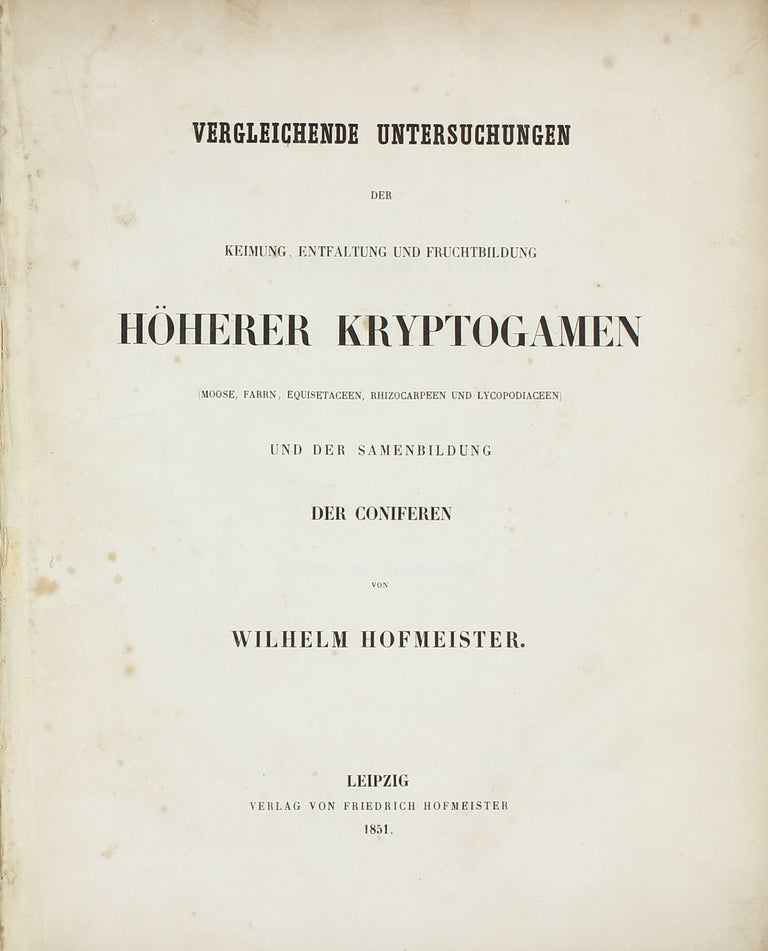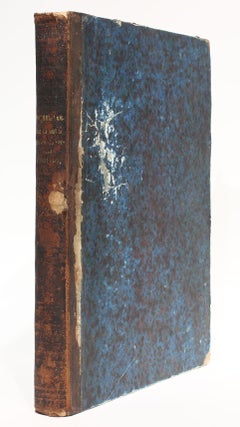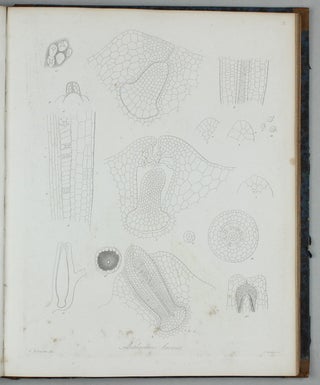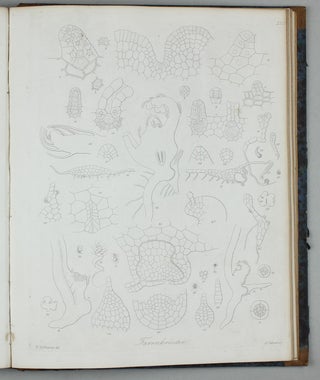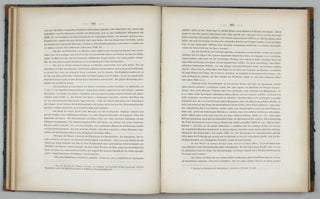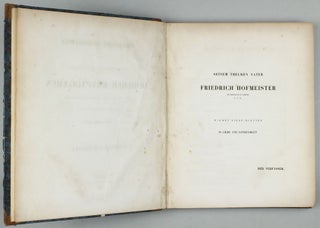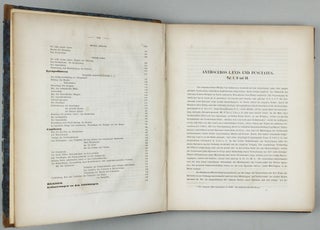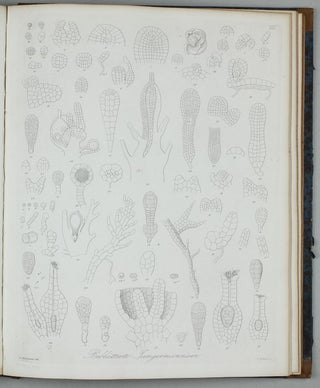With this single publication, the core of botany passed from its Middle Ages to the modern period
Vergleichende Untersuchungen der Keimung, Entfaltung und Fruchtbildung höherer Kryptogamen (Moose, Farrn, Equisetaceen, Rhizocarpeen und Lycopodiaceen) und der Samenbildung der Coniferen.
Leipzig: Verlag von Friedrich Hofmeister, 1851.
1st Edition. Hardcover. Very Good. Item #002558
4to (265 x 217 mm). viii, 179 [1] pp. and 33 numbered engraved plates bound at end, each with numerous figures illustrating plant structure. Contemporary half sheep, gilt-lettered spine, re-sprinkled edges (extremities and boards rubbed, corners worn, leather at spine and boards partially chipped, upper inner hinge broken). Internally little marginal browning, occasional minor spotting and soiling, plates generally quite fresh. Provenance: Collecta Friesia. Elias Fries (1794-1878); Thore M. Fries (1832-1913, signed on first flyleaf); Robert Fries (1876-1966); Magnus Fries (1917-1987); Robert Fries (b. 1952). All in all a fine and unsophisticated copy, extremely rare in contemporary binding as here (the Norman copy is in a modern binding). ----
Norman 1083; Evans 89a; Nissen BBI 902; Waller 11538; D.S.B. VI, p.465-7; cf. Dibner 34 (1862 English edition only). EXTREMELY RARE FIRST EDITION OF A CLASSIC IN THE HISTORY OF BOTANY. Son and heir of the Leipzig music publisher, Hofmeister was almost entirely self-educated in science and mathematics. Possibly because of his severe myopia, he was attracted to the study of botany early on and became an excellent microscopist. Like many of his generation, he was heavily influenced by Schleiden's textbook, which introduced a new methodology to the study of plant morphology and urged researchers to focus on cell structure and the study of life history. Hofmeister's early work in this area earned him a highly unusual honorary doctorate of philosophy in 1851, shortly before publication of the present work, "for which he is now remembered" (D.S.B.). In it Hofmeister presents without introduction the morphology and life cycles of several cryptogamic species (non-flowering plants such as mosses, ferns, lichens, etc.), in order of increasing complexity. Hofmeister "revealed the process of fertilization in non-flowering plants... as a regular alternation of sexual and asexual generations in the mosses, ferns. horsetails and liverworts. [He showed thatj the asexual generation propagated by means of spores, altemating with one in which spermatozoids unite with ova" (Dibner). "The amount of new information presented is immense; the errors are minor and do not affect the overall picture... With this single publication, the core of botany passed from its Middle Ages to the modern period" (D.S.B.).
Hofmeister's researches led him to the "revolutionary conclusion that all green land plants undergo a regular alternation of dissimilar generations in their complete life histories" (Norman), a major step toward a unitary classification of plant life. The extension of Hofmeister's classification to the higher taxonomic groupings of conifers and flowering plants "could not fail to foster the growth of phylogenetic and evolutionary ideas" (Morton, History of botanical science, London 1981, p. 403).
Hofmeister's work is presented without commentary and requires for comprehension a straight page-by-page reading. In 1852, the English botanist Arthur Henfrey published an expanded version, complete with commentary and other features that brought the work "from the level of the research worker down to that of the student" (DSB); this version appeared in the Tagungsberichte über die Fortschritte der Natur- und Heilkunde. A second edition, an English translation incorporating supplementary papers and revisions by the author, was published in 1862. According to DSB, of approximately 100 extant copies of this first edition, only five have appeared on the market in the past several decades. We can only trace one copy (the Norman copy) at auction in the past 70 years and another copy offered by Goldschmidt in a 1939 catalogue.
* Elias Fries (1794-1878)*, famous Swedish mycologist and botanist. His most important work was "Systema mycologicum" published in 1821-32.
Price: 1,800 € * convert currency
Delivery time up to 10 days. For calculation of the latest delivery date, follow the link: Delivery times
Lieferzeit max. 10 Tage. Zur Berechnung des spätesten Liefertermins siehe hier: Lieferzeiten


